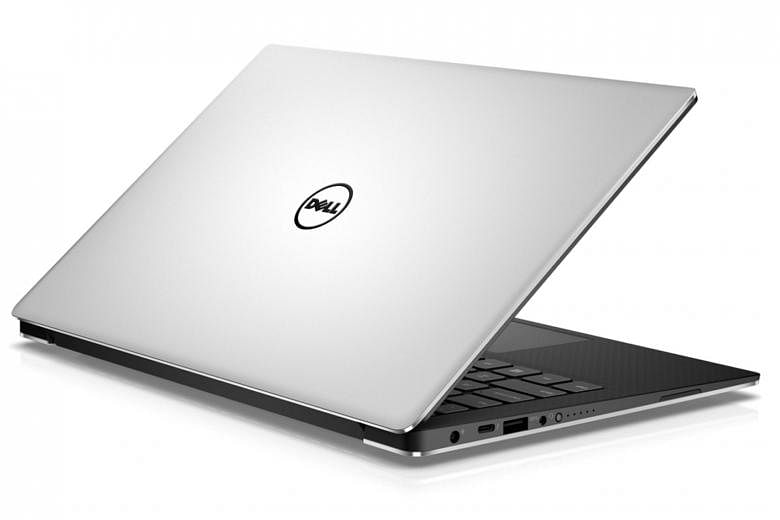The new Dell XPS 13 ultrabook comes with the latest eighth-generation Intel chip that doubles the number of processing cores from two to four.
It retains the design of previous models. The chief feature is the InfinityEdge display, a near-bezel-less screen that debuted over two years ago and foreshadowed the current trend in smartphones.
What is disappointing is that Dell has yet to address the display's only flaw - the lack of bezel at the top means the Web camera has to be on the bottom bezel, which can lead to unattractive selfies taken with the camera.
Despite its 13.3-inch screen, the XPS 13 has a smaller footprint than my company-issued 12.5-inch laptop. As a result of its compact size and sleek profile, it is easy to underestimate its weight. It is by no means heavy though - the touchscreen model that I tested is 1.3kg, average for a laptop of this size.
Premium materials such as aluminium and carbon fibre account for its weight. They make for a sturdy and solid laptop that feels almost indestructible.
The touchscreen is protected by Corning Gorilla Glass and comes with an ultra-high resolution of 3,200 x 1,800 pixels - Dell also offers a full-HD version. It looks crisp with excellent viewing angles. Colours look good, though the glossy finish does make it more reflective than a matte screen.
The backlit keyboard has decent finger travel. The keys feel firm when pressed. But the keyboard is more cramped than that on a standard 13-inch ultrabook.
-
TECH SPECS
-
PRICE: $2,699
PROCESSOR: Intel Core i7-8550U (1.8GHz)
GRAPHICS: Intel UHD Graphics 620
RAM: 16GB DDR3
SCREEN SIZE: 13.3 inches, 3,200 x 1,800 pixels
CONNECTIVITY: 1 x USB Type-C Thunderbolt 3, 2 x USB 3.0, SD card slot, audio jack
BATTERY: 60 watt-hour
-
RATING
-
FEATURES: 4/5
DESIGN: 4/5
PERFORMANCE: 4/5
VALUE: 3/5
BATTERY LIFE: 5/5
OVERALL: 4/5
As expected of a pricey laptop, the touchpad has a smooth glass coating that lets your fingers glide over the surface.
Given its premium billing, I was disappointed that a fingerprint sensor was not included as a default, but costs an extra $22.
Unlike ultrabooks that cut the number of ports in favour of a thinner form factor, the XPS 13 has retained a good mix of connectors, including two full-size USB Type-A ports and an SD card slot. There is no HDMI or DisplayPort - a Thunderbolt 3 port (using the Type-C connector) is included instead.
Its new quad-core Intel i7-8550U chip scored 2,989 on the PCMark 8 Home benchmark test. This is a bit higher than the 2,717 scored by the Razer Blade Stealth, which uses the last-gen Core i7-7500U.
While the new chip comes close to matching the 3,083 score of the Intel Core i7-7700HQ, often used in mid-range gaming laptops, the 8550U in the XPS 13 is not paired with a dedicated graphics chip and, hence, is not suitable for anything more than casual or older games.
Its battery life has improved greatly. The new model lasted 8 hours in our video-loop battery test at maximum brightness and volume, compared with the 2015 edition's 6.5 hours.
• Verdict: Dell has kept the award-winning design, while improving the XPS 13's battery life and processing power.


